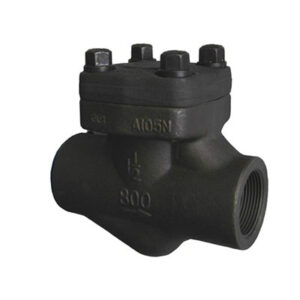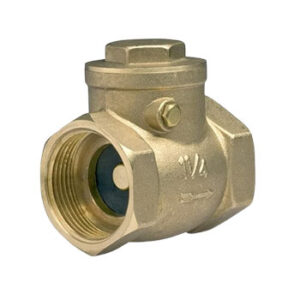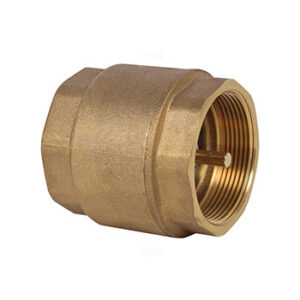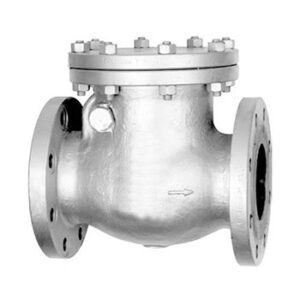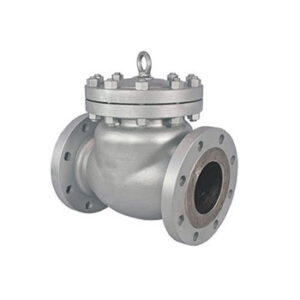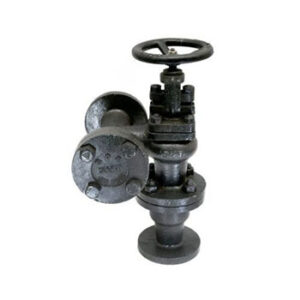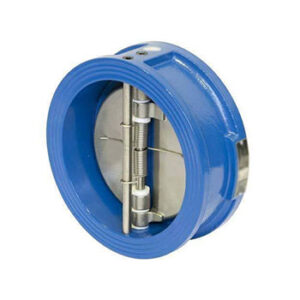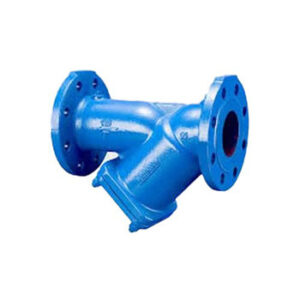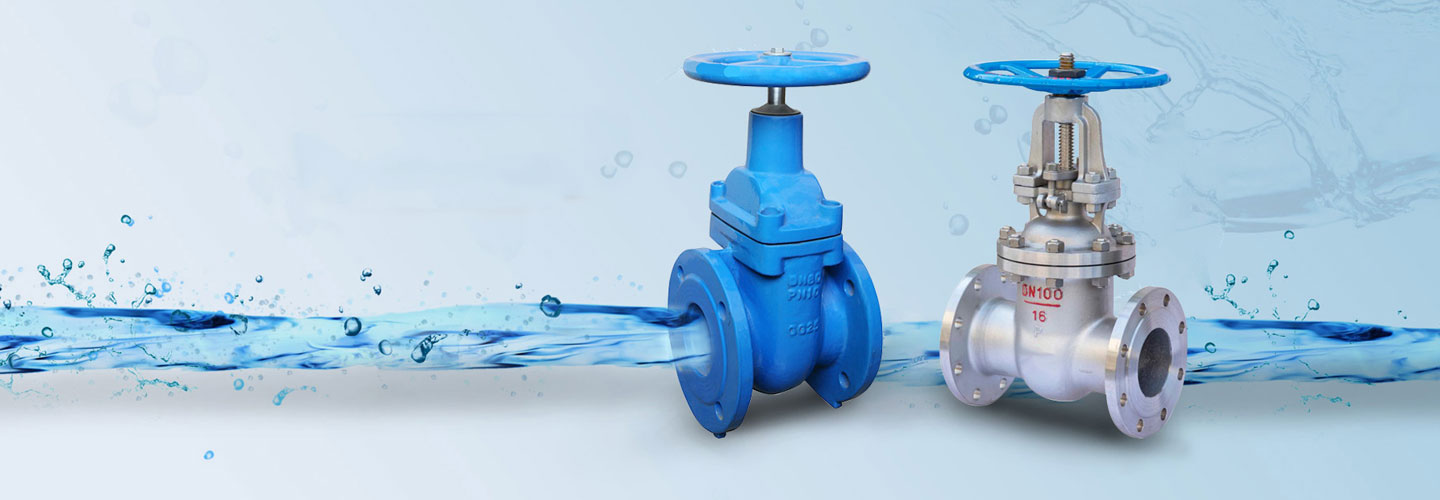
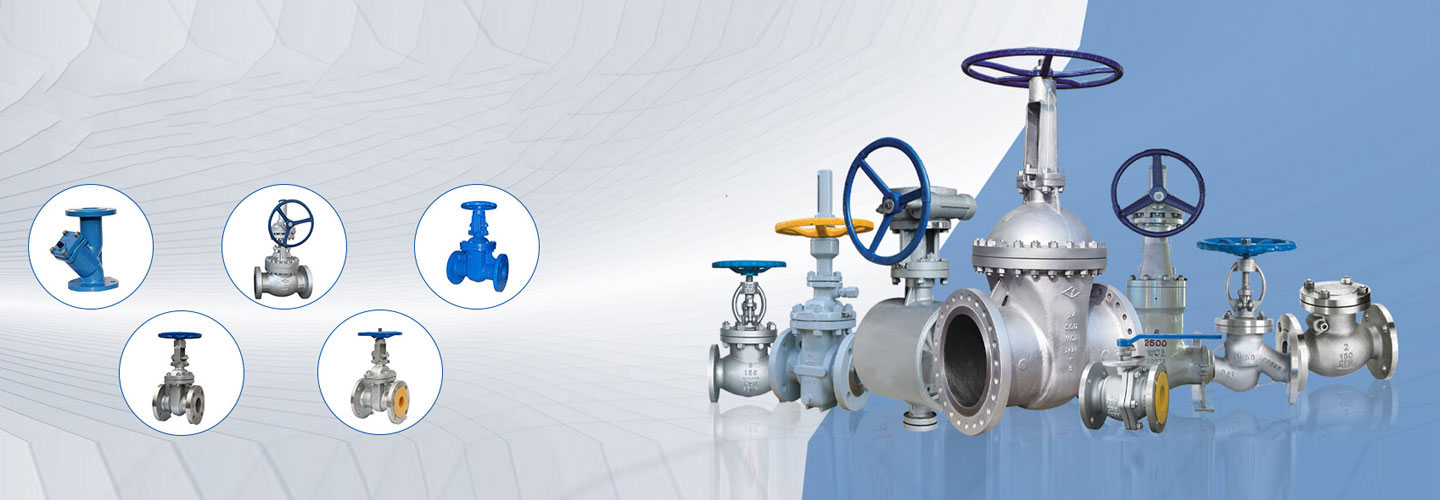
Check Valves Manufacturer
Home / Check Valves

A check valve is an automatic safety device designed to allow fluids and gasses to flow in one direction and prevent reverse flow. Under pressure, fluids enter the valve at the inlet where they force the disc off the seat of the valve and exit through the outlet. Flow continues steadily as long as the pressure is maintained to keep the disc open. Once there is a pressure drop, the disc automatically returns to its seat to shut off the flow.
The pressure that opens the valve is referred to as cracking pressure, which can vary from 3 psi to 350 psi depending on the size, purpose, and function of the check valve. Check valves ensures gasses or liquids are flowing in the right direction, and create tight seals to prevent leaks. By controlling the flow of liquids, check valves protect pumps and compressors from serious damage.
The names of check valves change according to their use and how they are manufactured. Their many names include clack, non-return (NRV), reflux, retention, and one-way valves. Regardless of the simplicity of their design and function, they are an essential factor in the protection of pumps, piping systems, and fluid movement. The most common type of check valve, the swing valve, can be seen in the image below. It is a full port design where the disc is completely out of the way during fluid flow. The directional flow opens the disc. As the flow continues, the disc remains open. As the flow slows or stops, the disk moves, by the force of gravity, into the closed position.
The main function of a check valve is to prevent reverse flow, which can damage pumps and other mechanisms. When a check valve closes, there is a potential water hammer where the fluid in a system slams against a closed check valve. This aspect of a check valves operation requires that they be resilient and durable and be made of high quality materials. Check valves can be noisy and need to have their noise suppressed. To that end, various forms of controls are added. To control surges and prevent the valve from slamming closed, springs, levers, or weights are designed into the valve’s structure. Taher Brothers is a reputed Check Valve Manufacturer in Kolkata, West Bengal, Odisha, Bihar, Jharkhand & all over India in this industry.
Types of Check Valves
There are endless varieties of check valves to fit multiple applications. There are industrial and commercial uses. In gardens, they control the flow of fertilizers and water in irrigation systems. The aerospace and aircraft industries use check valves to control corrosive fluids, hydraulic systems, and the fuel flow.
Though the function of check valves is the same regardless of where they are used, the types of check valves vary according to the flow rate, media gravity and temperature, line size, pressure, and velocity of the flow, which can be seen in the chart below.
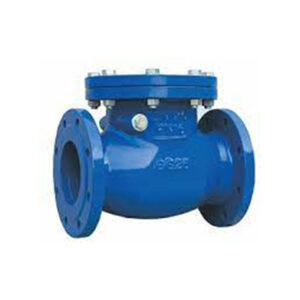
Application of Check Valves
| Type Flow | Media Type | Velocity Range FPS(m/s) | Recommended Check Valve |
| Uniform With Insignificant Reversal | Water Or Oil | 1 to 6 (0.3 to 2) | Swing Check w/ Lever and ctrl wt. |
| Steam, Water, Gas | 7 to 100 (2 to 30) | Simple Swing | |
| Uniform | Water Or Oil | 5 to 10 Max (a.5 to 3) | In-line Guided Disc |
| Pulsating | Air Or Gas | 5 to 10 Max (a.5 to 3) | In-line Guided Disc w/Cushion Chamber |
| Uniform With Normal Reversal | Water Or Oil | 7 to 10 (2 to 3) | Swing w/ Spring Assist To Close |
| Uniform With Severe Reversal | Water Or Oil | 7 to 10 (2 to 3) | Swing w/ Dashpot |
| Uniform Or Pulsating | Steam, Water, Or Gas | 8 to 160 (2.5 to 50) | Tee- Or Inclined- Pattern Lift |
| Uniform Or Pulsating (Severe Revesal) | Steam, Water, Or Gas | 10 to 160 (3 to 50) | Tee- Pattern Lift w/ Dashpot |
| Uniform | Steam, Water, Or Gas | 12 to 250 (4 to 75) | Tilting Disc |
| Uniform Or Pulsating | Steam, Water, Or Gas Or Oil | 20 to 250 (6 to 75) | Wye-Pattern Lift |
| Uniform Or Pulsating (Severe Revesal) | Wye-Pattern Lift w/ dashpot |
Check Valve Types
The choice of a check valve has to fit the needs of an application. When engineers select a check valve, they adapt to fit the type of media, the size of the pipe, the pressure gradient, the velocity of the fluid, and the type of pumping mechanism. The examination of these factors are necessary to ensure the safe operation of an application or process and to protect equipment.
There is a wide range of check valves, with standard ones that can be purchased at a home improvement store to ones that are specially designed to fit the needs of unique applications. This wide variety makes it difficult to provide an all inclusive list of check valves since every day new ones are being developed. In the midst of the many check valves, descriptive factors are common to all types.
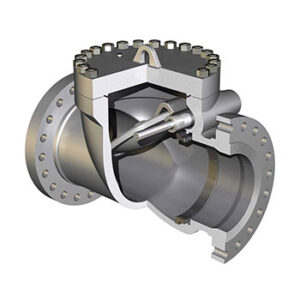
Swing Check Valves:
A swing check valve is a self actuated valve that serves as a backflow preventer or one direction valve. They have a disc that swings on a hinge off the seat of the valve to allow forward flow. When the flow stops, it swings back into position to stop reverse flow. The weight of the disc has to be sufficient to withstand the impact of the return flow. Swing check valves have less turbulence and low pressure drop. Lever and weight swing check valves are used when there is a chance of water hammer while ones with lever and spring are used in high pressure and high flow velocity applications. Regardless of the type of swing check valve, their disc needs to be checked and cleaned regularly.
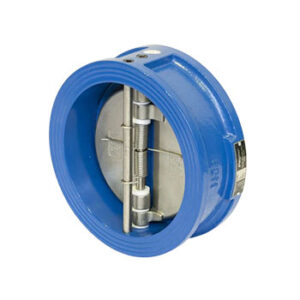
Wafer Check Valves:
Wafer check valves have a thin disc that swings to block or allow flow. The flow of the media is allowed to flow in one direction, which lifts the disc off its seat. When the flow is in the opposite direction, the disc closes to create a seal to prevent backflow. In many cases, a spring or lever is attached to the disc for faster closing time and helps to reduce water hammer. The thin, short, and compact design of wafer check valves makes them ideal for small pipe systems and systems that move solid or semi solid media.
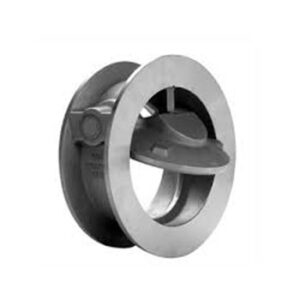
Tilting Disc Check Valve:
A tilting disc check valve has its pivot point at the center of the disc so that the fluid flows over the top and bottom of the disc. They are often used where there is frequent flow reversal. When the disc is open, the flow keeps it open, which is different from a swing check valve where the velocity of the flow keeps it open. The disc is small and light with a center of gravity that is close to its pivot point. It has a low pressure drop with low flow rates and a higher pressure drop with high flow rates.
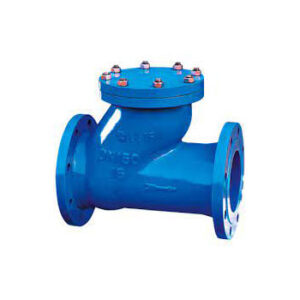
Ball Check Valve
Ball check valves use a ball that moves up and down in the valve to block the flow. The seat of the valve is designed to fit the ball and has a conically shaped chamber that guides the ball to the seat. The weight of the ball can vary depending on the pump capacity and the possibility of water hammer. Reverse flow moves the ball back to the seat to seal off the flow. When there is enough pressure in the flow, the ball is lifted away from the flow. When the pressure decreases, it comes down and is guided to the seat.
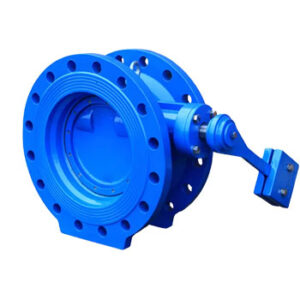
Butterfly Check Valve:
A butterfly check valve is also known as a dual, folding disc, double disc, or splits check valve. The halves of the disc open toward the centerline, as seen in the diagram, during the forward flow of the fluid. With reverse flow, the halves open and seal the pipe. The short distance that the halves have to travel lessens the slamming effect on the discs. Butterfly check valves operate very quietly making them ideal for heating, ventilation, and air conditioning systems.
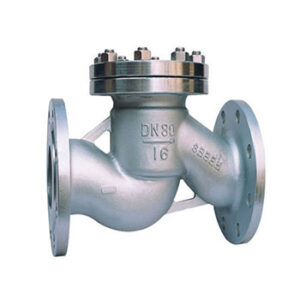
Lift Check Valves:
The flow for lift check valves enters below the seat of the valve. The pressure of the flow lifts the disc or ball off the seat. When the flow weakens, slows, reverses, or stops, gravity forces the disc or ball downward onto the seat. They are ideal for systems with high flow and velocity rates.
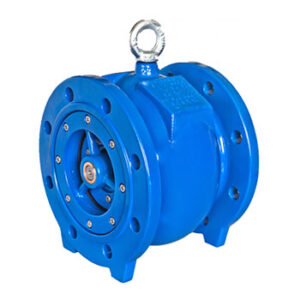
Silent Check Valves:
Silent check valves, also known as poppet check valves, avoid water hammer or shock by closing before fluid flow reversal. The benefit of a silent check valve is that they close quickly and smoothly, which prevents damage to surrounding materials.
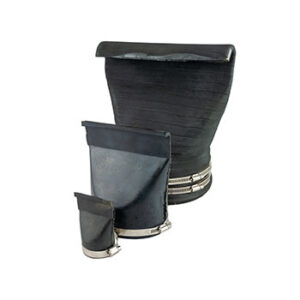
Duckbill Check Valves:
Duckbill check valves are made of rubber or synthetic elastomer and have the shape of a duck‘s beak. The open end of the valve is stretched over the outlet to the supply line. The other end retains its normal shape. Upstream pressure forces the duckbill lips open allowing the flow. As the pressure increases, the lips open wider. As the pressure gets lower, the lips return to a flatten and close.
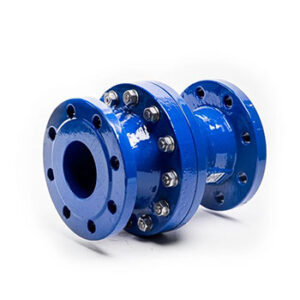
Diaphragm Check Valves:
Diaphragm check valves have a rubber diaphragm or disk=c. The valve is centered in the seating area with the sealing surface on the inlet side of the valve and has an opening in the center. Backflow causes the rubber disk= to cover the sealing opening, which closes the opening to the inlet.
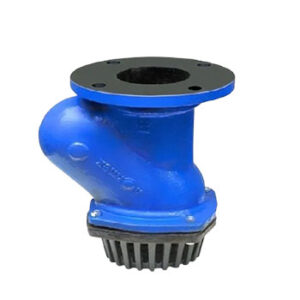
Foot Check Valves:
A foot check valve is at the bottom of a pipe connected to a pump. They act like a ball check valve with a screen to block debris. The opening of the valve is larger than the opening of the line. Foot valves keep the pump primed. When the pump is operating, suction pulls water up through the pipe and foot valve. When the pump is turned off, the water in the pipe is pulled back by the force of gravity. The foot check valve blocks the path of the water as it falls and is closed by the weight of the water.
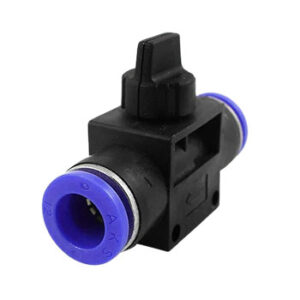
Pneumatic Check Valves:
Pneumatic check valves, or air check valves, control air flow from a compressor by letting air in and preventing it from going out. They are placed in pneumatic circuits that need air flow in one direction.
How are Check Valves Used
Since the invention of the self-sealing valve, at the beginning of the 20th Century, they have become the answer to backflow problems in a wide range of industries. Any industry that transports products through pipes has a check valve somewhere in their system.
Check valves are cost saving devices that prevent waste and protect equipment. Fluids that travel through a piping network need to be prevented from being lost due to poor handling. Check valves automatically stop liquid flow when pressure drops or the flow decreases by blocking backflow and containing the fluid.
Check Valve Uses
Pumps:
Check valves in pumps is one of their more common uses.
- Single pump system – The check valve controls a flow from a suction tank and blocks it from reversing when the pump stops.
- Parallel pump system – In a parallel pump system, a check valve prevents the duty pump from pumping into the standby pump.
- Series pump system – A series of pumps is used when pumping materials in a pipe line over long distances. If any of the pumps fail in the series, the check valve activates to prevent losses.
- Pressure relief – Spring loaded check valves are used in gas applications for low pressure conditions. If the pressure in the system rises above the cracking pressure, the check valve safely releases the gas.
- Foot valve – The foot valve blocks debris and prevents water from returning to the well when the pump is turned off.
Quick Links
- Cock Valves Manufacturer
- Stainless Steel Trap Manufacturer
- Bronze Valve Manufacturer
- Cast Iron Valve Manufacturer
- Bucket Valve Manufacturer
- Forged Steel Valve Manufacturer
- CI Water Meters Manufacturer
- Safety Valves Manufacturer
- Meter Valves Manufacturer
- Ball Valves Manufacturer
- Blow Down Valves Manufacturer
- Hydrant Valves Manufacturer
- Check Valves Manufacturer
- Forged CS Check Valves Manufacturer
- Bronze Check Valve Manufacturer
- Forged Brass Check Valve Manufacturer
- Cast Steel Check Valve Manufacturer
- Cast CS Swing Check Valves Flange Manufacturer
- Cast Iron Accessible Feed Check Valves Manufacturer
- CI Water Type Dual Plate Check Valves Manufacturer
- Strainer Valves Manufacturer
- DRP Valves Manufacturer
- Globe Valves Manufacturer
- Gate Valves Manufacturer
- Diaphragm Valves Manufacturer
- Butterfly Valves Manufacturer



